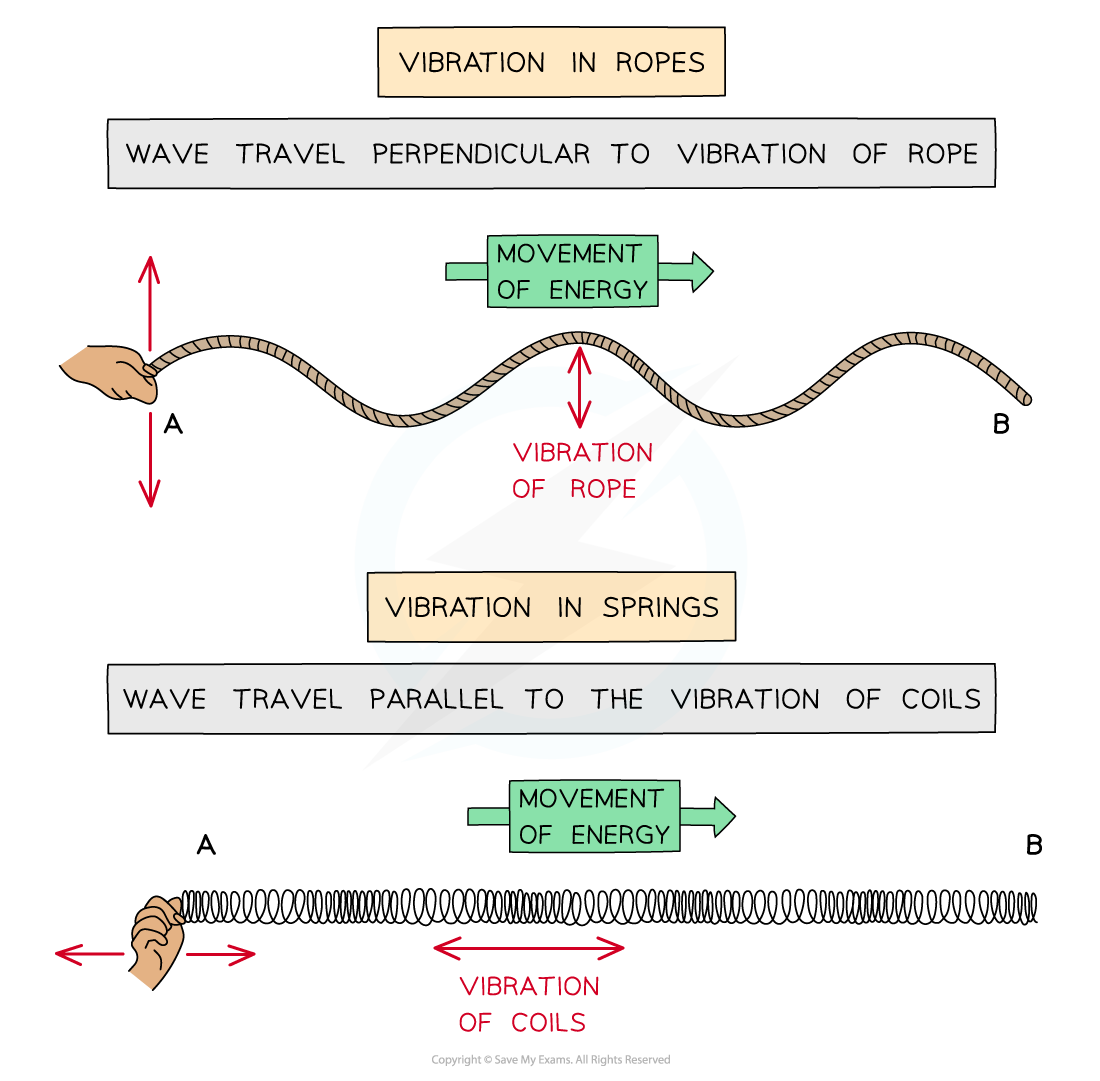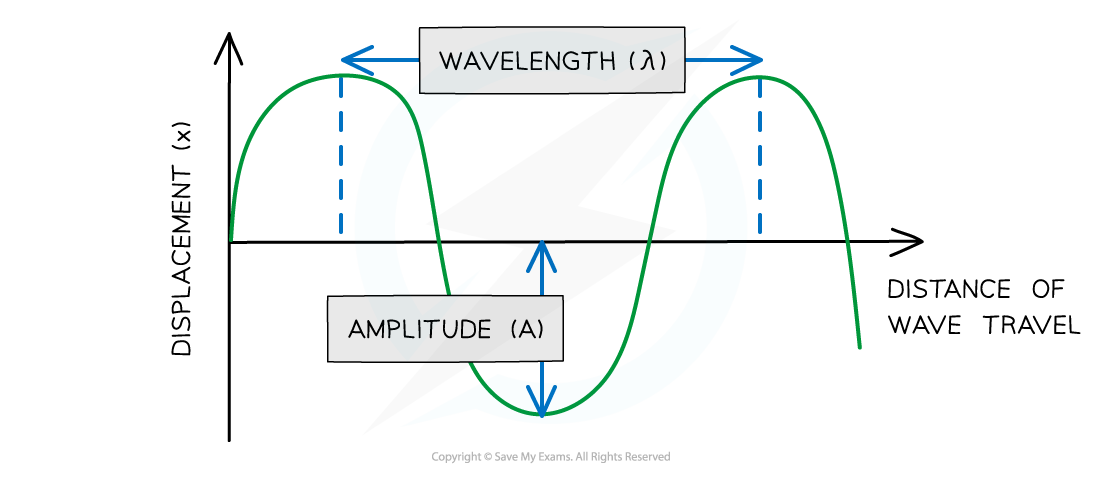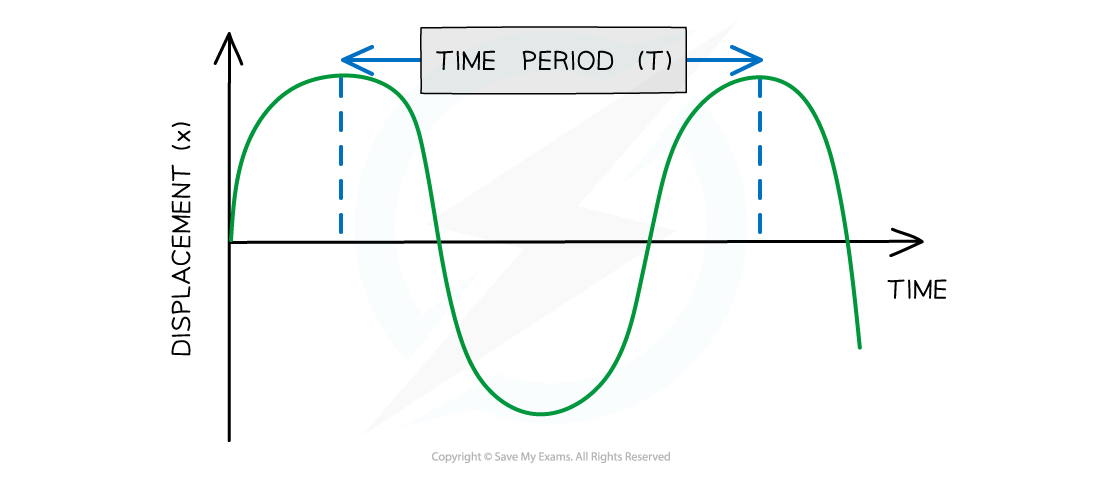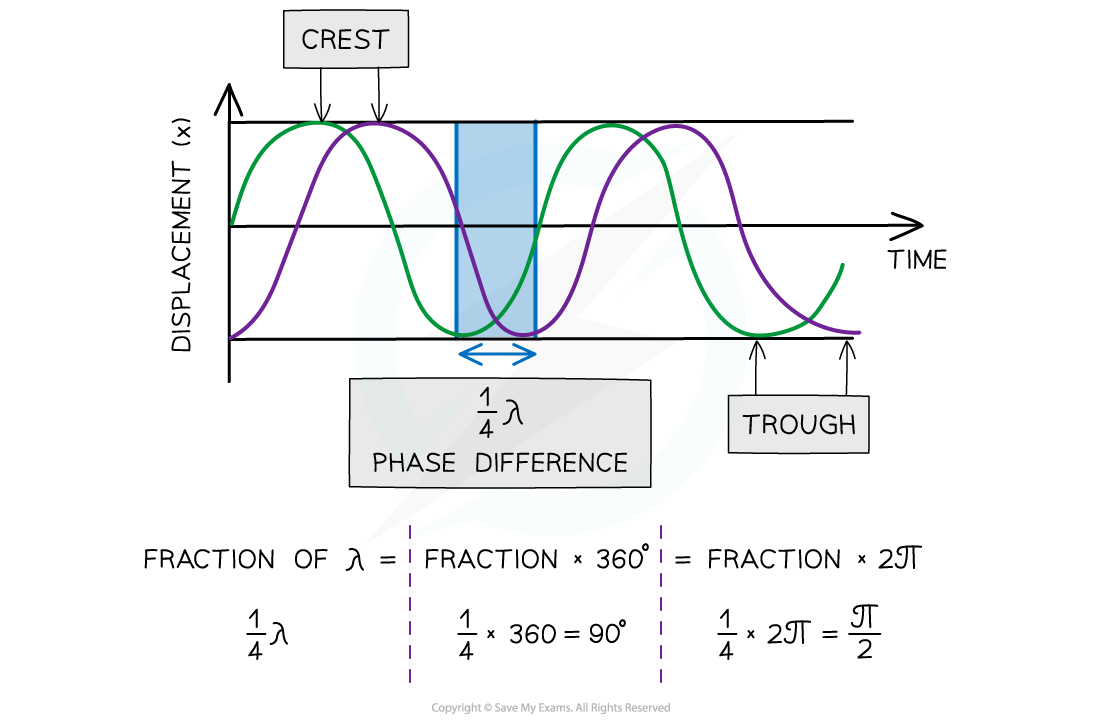Progressive Waves: Longitudinal & Transverse (OCR AS Physics): Revision Note
Exam code: H156
Longitudinal & Transverse Waves
In mechanical waves, particles oscillate about fixed points
A progressive wave is an oscillation that transfers energy and information
The substance in which the waves move through are disturbed (eg. water, air)
The particles of the substance oscillate about a fixed position
This is sometimes called a travelling wave
There are two types of waves
Transverse
Longitudinal
The type of wave can be determined by the direction of the oscillations in relation to the direction the wave is travelling
Transverse Waves
A transverse wave is defined as:
A wave in which the particles oscillate perpendicular to the direction of the wave travel (and energy transfer)
Examples of transverse waves are:
Electromagnetic waves e.g. radio, visible light, UV
Vibrations on a guitar string
Transverse waves can be shown on a rope
Transverse waves can be polarised
Longitudinal Waves
A longitudinal wave is defined as:
A wave in which the particles oscillate parallel to the direction of the wave travel (and energy transfer)
Examples of longitudinal waves are:
Sound waves
Ultrasound waves
Longitudinal waves can be shown on a slinky spring
Longitudinal waves cannot be polarised

Waves can be shown through vibrations in ropes or springs
Examiner Tips and Tricks
The definitions of transverse and longitudinal waves are often asked as exam questions, make sure to remember these!
General Wave Properties
Displacement (x) of a wave is the distance of a point on the wave from its equilibrium position
It is a vector quantity; it can be positive or negative
Amplitude (A) is the maximum displacement of a particle in the wave from its equilibrium position

Diagram showing the amplitude and wavelength of a wave
Wavelength (λ) is the distance between points on successive oscillations of the wave that are in phase
Displacement, amplitude and wavelength are all measured in metres (m)

A wavelength on a longitudinal wave is the distance between two compressions or two rarefactions
Period (T) or time period, is the time taken for one complete oscillation or cycle of the wave
Measured in seconds (s)

Diagram showing the time period of a wave
Frequency (f) is the number of complete oscillations or wavelengths passing a point per unit time
Measured in Hertz (Hz) or s-1
Speed (v) is the distance travelled by the wave per unit time, and defined by the wave equation
Measured in metres per second (m s-1)
Phase
The phase difference tells us how much a point or a wave is in front or behind another
It is defined as:
How far the cycle of one point is compared to another point on the same wave
This can be found from the relative positive of the crests or troughs of two different waves of the same frequency
When the crests or troughs are aligned, the waves are in phase
When the crest of one wave aligns with the trough of another, they are in antiphase
The diagram below shows the green wave leads the purple wave by ¼ λ

Two waves ¼ λ out of phase
In contrast, the purple wave is said to lag behind the green wave by ¼ λ
Phase difference is measured in fractions of a wavelength, degrees or radians
The phase difference can be calculated from two different points on the same wave or the same point on two different waves
The phase difference between two points:
In phase is 360o or 2π radians
In anti-phase is 180o or π radians
Worked Example
Plane waves on the surface of water at a particular instant are represented by the diagram below.

The waves have a frequency of 2.5 Hz. Determine:
(a) The amplitude
(b) The wavelength
(c) The phase difference between points A and B
Answer:

Examiner Tips and Tricks
When labelling the wavelength and time period on a diagram, make sure that your arrows go from the very top of a wave to the very top of the next one. If your arrow is too short, you will lose marks. The same goes for labelling amplitude, don’t draw an arrow from the bottom to the top of the wave, this will lose you marks too.

You've read 0 of your 5 free revision notes this week
Unlock more, it's free!
Did this page help you?